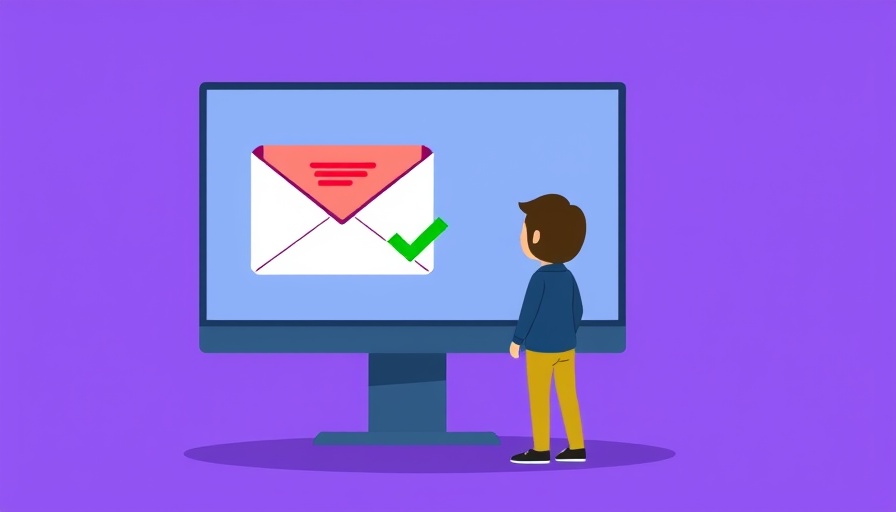
Mastering Your Inbox: Why Whitelisting and Blacklisting Matter
In an era where email communication dominates professional life, effective inbox management is crucial. With overwhelming amounts of information coming in daily, it’s vital to distinguish important emails from spam. Whitelisting and blacklisting are strategies that allow users to take control, helping to enhance productivity and ensure that critical communications are not missed.
Understanding Whitelists and Blacklists
Whitelisting is the practice of allowing emails from specific, trusted sources to bypass spam filters, ensuring they land directly in your inbox. Conversely, blacklisting prevents emails from known untrustworthy or unwanted senders from reaching you. These practices are essential for digital marketers looking to optimize their email campaigns and enhance engagement with their audience.
Practical Steps to Whitelist Effectively
Whitelisting can vary by email service provider, but the general steps remain quite similar. Start by identifying the key email addresses or domains you trust. Many email services allow you to add these addresses directly to your contacts. This action often marks them as safe. Additionally, consider checking the spam folder periodically to ensure you haven’t missed important communications that may require whitelisting.
Why Blacklisting is Just as Essential
The ability to blacklist undesirable senders protects your inbox from phishing attempts and irrelevant marketing emails. By taking the proactive step of blacklisting certain email addresses, you guard your resources and maintain focus on pertinent content. In the landscape of digital marketing, where consumer trust is paramount, ensuring your communications aren’t considered spam is a critical challenge.
The Role of Email Marketing Tactics
Understanding how whitelisting and blacklisting affects email deliverability is essential for businesses looking to enhance their email marketing strategies. Implementing best practices—such as ensuring double opt-ins and encouraging the whitelisting of your address in your emails—can significantly improve your open rates and overall campaign effectiveness.
Future Trends in Email Management Tools
The future of email management is undoubtedly influenced by advancements in artificial intelligence and machine learning. Emerging tools are beginning to utilize AI to make email filtering smarter, automatically learning user preferences to enhance whitelisting and blacklisting processes. This evolution not only streamlines inbox management but also aids in adapting to the ever-changing landscape of digital communications.
Proactive Steps for Digital Marketers
As professionals validate their presence in their clients’ inboxes, they must adopt strategies that integrate audience engagement practices with effective email management. Providing clear instructions on how to whitelist your emails can foster better connections with your audience, ultimately enhancing engagement. This also aids in reducing unsubscribe rates, where improper filtering could be a hidden culprit.
Take Control of Your Email Strategy
In conclusion, establishing robust whitelisting and blacklisting practices is not merely about controlling spam, but is a proactive approach to enhance productivity, communication, and client trust within the digital marketing universe. By staying ahead of inbox management strategies and utilizing technology, professionals can significantly improve their email strategy’s effectiveness.
Now, it's time to take action! Whether you're a business owner, digital marketer, or a professional aiming for efficiency, implement these inbox strategies today for a more organized communication flow. Mastering your email practices will not only improve your own productivity but will also foster better client and customer relationships!
 Add Row
Add Row  Add
Add 




Write A Comment